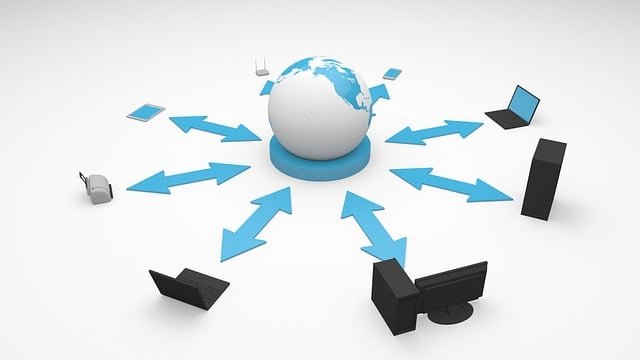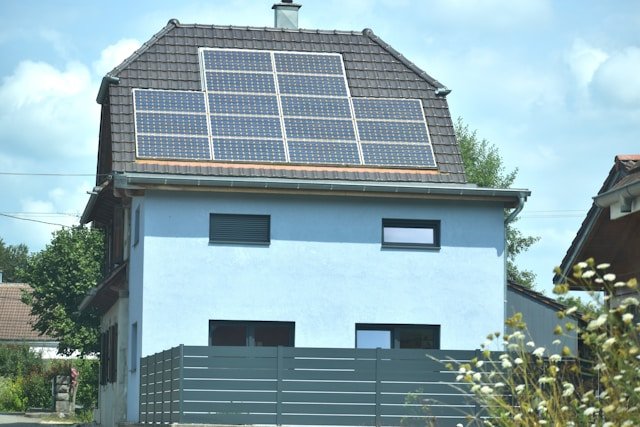10 Surprising Ways Digital Twin Technology is Revolutionizing Industries in 2025
Unlocking the Potential of Digital Twin Technology
If you’re like most people, you might think that digital twin technology sounds like something from a sci-fi movie—a futuristic concept reserved for the world of artificial intelligence and cutting-edge industries. But the truth is, that digital twin technology is already here, and it’s not just a passing trend. It’s rapidly transforming the way businesses operate, from manufacturing to healthcare and even smart cities.
So, what exactly is this technology? Simply put, a digital twin is a virtual model of a physical object, system, or process. But it’s much more than just a 3D model. It’s a dynamic, real-time digital replica. This replica collects data from sensors and other sources. It enables businesses to monitor, analyze, and predict behaviors.
The key takeaway here is that digital twins aren’t just for tech giants or futuristic industries. The benefits of this technology are accessible to businesses of all sizes and sectors. It offers valuable insights that can improve efficiency. These insights also enhance cost savings and sustainability.
In this blog, we’ll dive into how digital twin technology is revolutionizing industries. We will also explore why it’s poised to become a cornerstone in the world of business in 2025.
What is Digital Twin Technology?
There’s a common misconception that digital twin technology is just about creating a static 3D model of an object. While that may be part of it, the real magic happens when you combine these digital models with real-time data to create a system that evolves as the physical object does. These digital replicas are dynamic and can continuously update based on the data they receive, making them incredibly powerful for industries that rely on precise, real-time information.
At its core, digital twin technology involves the creation of a virtual copy of a physical system, whether that’s an industrial machine, a city infrastructure, or even a person’s health. The virtual model is connected to sensors or other data sources, which provide constant feedback to keep the digital twin up to date. This setup allows businesses to monitor conditions, perform simulations, and make decisions based on real-time data integration—without having to interact with the physical asset directly.
How Does It Work?
To make this more tangible, imagine a digital twin in manufacturing. In a factory setting, engineers create a digital twin of a machine or an entire production line. It connects to sensors that monitor things like temperature, vibration, and wear. This data is continuously fed into the digital twin. It provides operators with a detailed picture of the system’s health. They can also see the performance in real-time.
For example, if the machine begins to overheat, the digital twin can predict potential failure before it happens. This allows for predictive maintenance, where companies can address issues before they cause significant downtime or damage. This shift from reactive to proactive maintenance offers a significant advantage. It is one of the reasons why digital twin technology is a game-changer in sectors like manufacturing and energy.
Applications Across Industries:
Digital twin technology is transforming industries by creating virtual replicas of physical systems. In manufacturing, it boosts efficiency and predicts maintenance needs. In healthcare, it enables personalized treatments. Automotive companies use it for vehicle design and performance optimization, while energy sectors leverage it for smarter grids and sustainability. From aerospace to smart cities, digital twins are driving innovation and efficiency across the board.
Digital Twin in Manufacturing
Contrary to the belief that digital twin technology is just for large corporations, smaller manufacturing businesses are also adopting it to gain a competitive edge. Whether it’s tracking machine performance or predicting maintenance needs, digital twin solutions are driving efficiency and cost savings.
Let’s take the example of predictive maintenance. Traditionally, businesses would only fix machines once they broke down, leading to costly repairs and significant downtime. With digital twin technology, machines can be monitored in real-time, allowing businesses to predict failures and avoid costly repairs. This is just one-way digital twin applications are revolutionizing manufacturing.
Smart Cities: Transforming Urban Living
Another surprising area where digital twin technology is making waves is in smart cities. Far from being just futuristic buzzwords, smart city solutions powered by digital twins are already making our cities more efficient, sustainable, and livable. A digital twin for urban planning creates a virtual model of an entire city, capturing everything from traffic patterns to energy consumption.
The application of digital twins in urban planning enables real-time monitoring of infrastructure and public services. This allows city planners to make data-driven decisions, improving everything from waste management to traffic flow. By using digital twin technology to simulate scenarios, cities can plan for future growth, identify weaknesses, and optimize resources. Imagine being able to predict traffic congestion or energy demand before it even happens.
Digital Twin in Healthcare: A Personalized Approach
You might assume that digital twin technology is mainly used in industries like manufacturing and urban planning, but it’s also making significant strides in healthcare. One of the most promising digital twin applications in healthcare is the creation of virtual models of patients. These digital models can simulate various health conditions and predict how a patient’s body will react to different treatments.
For instance, a digital twin in healthcare systems can simulate how a specific drug might interact with a patient’s body, allowing doctors to make more informed treatment decisions. Similarly, digital twin technology can be used to monitor a patient’s vital signs in real-time, giving healthcare providers valuable insights that improve care outcomes.
The Role of Real-Time Data in Digital Twin Technology
One of the most important aspects of digital twin technology is its ability to continuously integrate real-time data. This is what sets digital twins apart from static models. The data is usually gathered through sensors or IoT devices connected to the physical asset, allowing the digital twin to update constantly. This integration of real-time data enables businesses to track the status of systems, identify issues early, and make data-driven decisions.
For example, in a smart factory, sensors embedded in machinery can relay information about the machine’s performance directly to its digital twin, which constantly analyzes the data and alerts operators about any potential issues. This ability to make decisions based on real-time data is a huge advantage for industries seeking to improve operational efficiency.
Benefits of Digital Twin Technology:
While digital twin technology is still emerging, the benefits of digital twins are already clear. From improving efficiency and productivity to enabling predictive maintenance and cost savings, the applications of digital twins are vast.
In addition, businesses can improve decision-making by using digital twin systems to simulate scenarios before making any physical changes. The ability to test different strategies in a virtual environment means businesses can make smarter, data-backed decisions.
We continue to look toward the future. Digital twin technology will play an increasingly important role. It will transform industries across the globe. By harnessing the power of real-time data, businesses will gain deeper insights into their operations. They will create dynamic virtual replicas to improve performance. Ultimately, this will increase their competitive advantage.
How Digital Twin Technology is Revolutionizing Manufacturing
When most people think of digital twin technology, they probably envision futuristic tech. They might also think of advanced industries like aerospace or space exploration. However, digital twin technology in manufacturing is becoming a cornerstone for modern factories, transforming how production lines operate and improving overall operational efficiency.
The Role of Digital Twins in Smart Manufacturing
Gone are the days when manufacturing systems were isolated, static entities. With the rise of digital twin technology, we now have smart manufacturing systems that connect physical assets to their virtual counterparts in real time. This presents numerous opportunities for manufacturers. They can streamline their processes and predict issues before they occur. This also enhances overall production quality.
For instance, digital twin systems can help manufacturers monitor the health of machines in real-time. Sensors track variables like temperature, vibration, and performance, feeding that information into a digital twin model. This allows operators to spot potential issues before they cause any serious damage, leading to predictive maintenance. By preventing equipment failures in advance, companies avoid costly repairs. They also reduce downtime significantly. This approach saves both time and money.
Digital Twin Technology in Production Lines
One of the key benefits of digital twins in manufacturing is how they improve production line efficiency. Think of a digital twin in a production line as the digital equivalent of your assembly line, constantly updated with real-time data. By continuously monitoring each stage of the production process, digital twins help detect bottlenecks and identify areas for improvement.
For example, a digital twin model of a production line can help businesses spot inefficiencies or sub-optimal performance. If one machine is slowing down the entire process, operators receive alerts via the digital twin. This allows them to take immediate corrective action. This ability to monitor and adjust production in real time helps reduce operational costs. It enhances throughput and improves overall product quality.
Supply Chain Optimization with Digital Twin Technology
Digital twins are also playing a crucial role in supply chain optimization. Manufacturers can create a digital replica of the entire supply chain. This includes raw material sourcing to final product delivery. By doing so, they gain better control over their operations. This allows for better resource allocation, optimized inventory management, and improved risk management.
For example, if a supply chain disruption occurs, a digital twin model can simulate how it will affect the entire supply chain, allowing businesses to plan for alternative routes or solutions. This level of foresight helps companies avoid costly delays, ensuring they stay competitive in an increasingly globalized and fast-paced market.
Sustainability and Cost Savings
Another overlooked benefit of digital twin technology in manufacturing is its role in sustainability. Businesses can monitor energy consumption and waste production in real-time. They can optimize their processes to be more eco-friendly. By identifying inefficiencies or overuse of resources, manufacturers can reduce their carbon footprint while simultaneously cutting operational costs.
Digital twin solutions are increasingly being used to simulate different scenarios. They help manufacturers achieve their sustainability goals. Digital twins offer data to improve energy efficiency. They also help reduce waste. This data aids manufacturers in making greener and more cost-effective decisions.
Digital Twin Technology in Smart Cities
You may think digital twin technology is only for businesses and industries, but it’s also transforming the way cities operate. Smart cities, powered by digital twins, are making urban living more efficient, sustainable, and connected. Digital twin models simulate and analyze everything from traffic patterns to energy usage. They are changing the landscape of urban development.
The Role of Digital Twins in Urban Planning
Cities are facing increasing pressure as urban populations grow. They need to manage resources efficiently. At the same time, they must maintain a high quality of life for their residents. This is where digital twin technology in urban planning comes in. Digital twin models of cities allow planners to simulate various aspects of city life, such as traffic management, energy distribution, and even waste management.
For example, digital twins for smart cities can simulate traffic flow to reduce congestion. Cities can analyze real-time data. They can adjust traffic light patterns and direct traffic to less congested routes. They may even predict where bottlenecks will occur during peak times. This data-driven approach helps improve urban mobility and reduces commuting times for city dwellers.
Energy Efficiency and Sustainability in Smart Cities
In addition to traffic optimization, digital twin technology is helping cities become more energy-efficient. By creating a virtual model of a city’s energy grid, digital twins allow urban planners to monitor energy consumption patterns and identify opportunities for improvement. This can include reducing peak-hour energy demand or identifying areas where renewable energy sources can be integrated more effectively.
For example, in smart cities, digital twins can simulate the integration of solar power into the grid, predict energy consumption spikes, and adjust for optimal energy use. This not only reduces costs but also promotes sustainability by minimizing reliance on non-renewable energy sources.
Predicting and Preventing Infrastructure Failures
Cities face the constant challenge of maintaining aging infrastructure. Thanks to digital twin technology, cities can now predict infrastructure failures before they happen. Cities can monitor the wear and tear on infrastructure. For instance, they do this by creating digital twins of buildings, bridges, and other structures in real time. Sensors embedded in these structures send data to the digital twin model. The model can alert authorities if there’s a risk of failure. This allows them to address potential issues proactively.
This ability to simulate real-world scenarios and analyze the performance of physical infrastructure in real time helps cities prevent costly repairs, extend the lifespan of assets, and improve overall urban safety.
The Future of Smart Cities with Digital Twin Technology
As digital twin technology continues to evolve, the potential applications in smart cities are virtually limitless. Soon, smart city solutions powered by digital twins will enable cities to become even more responsive and adaptive to the needs of their residents. From reducing traffic congestion to enhancing public safety, digital twins will play a central role in building more sustainable, connected, and resilient cities.
The future of urban living is undeniably tied to the advancement of digital twin technology, and cities across the globe will increasingly rely on these innovative solutions to improve the quality of life for their residents.
The Future of Digital Twin Technology: Trends to Watch
As we’ve seen, digital twin technology is already revolutionizing industries, but the potential for this technology is only beginning to be unlocked. Looking ahead, several exciting trends are poised to shape the future of digital twin applications across sectors. These trends not only indicate where the technology is heading but also provide insight into how businesses can leverage digital twin solutions to stay ahead of the curve.
AI and Machine Learning Integration with Digital Twins
One of the most significant trends to watch in the world of digital twin technology is its integration with artificial intelligence (AI) and machine learning (ML). While digital twins have always been powerful, combining them with AI will unlock even greater potential. With AI driving data analysis, digital twins can become smarter and more capable of predicting and optimizing operations.
For example, AI-driven digital twins can analyze vast amounts of real-time data from sensors and other sources, automatically detecting patterns that human operators might miss. These intelligent digital twins can predict issues with incredible accuracy and recommend corrective actions before problems escalate, thus reducing downtime and improving efficiency across industries.
The ability to integrate machine learning algorithms into digital twin models will also improve their predictive capabilities, making them even more valuable for businesses seeking to reduce maintenance costs and maximize asset longevity.
Real-Time Simulation and Virtual Testing
Another exciting future trend for digital twin technology is its growing use in real-time simulations and virtual testing. Industries seek more agile solutions. They also want flexibility. Digital twins have become essential tools. They test different scenarios without the need for physical prototypes. This capability will drastically reduce time and cost in fields like product design, urban planning, and even healthcare.
For example, in manufacturing, virtual testing with digital twins will allow engineers to test how a product or process will perform under various conditions before ever building a physical prototype. This real-time simulation allows businesses to optimize designs, improve quality, and even forecast product performance with greater precision.
For smart cities, real-time simulations powered by digital twins will allow urban planners to test how infrastructure changes will impact the city as a whole. Whether it’s adjusting traffic systems or testing the integration of new energy sources, these virtual tests will provide invaluable insights that lead to smarter decision-making.
The Role of IoT in Advancing Digital Twin Capabilities
The Internet of Things (IoT) has already played a crucial role in the development of digital twins, and this trend is expected to accelerate in the coming years. IoT devices, such as sensors and actuators, will continue to be integral to the functioning of digital twin systems, providing real-time data that enhances the accuracy and effectiveness of digital models.
With the increasing deployment of IoT devices across industries, from manufacturing floors to city infrastructures, the volume and diversity of data that digital twins can access will grow exponentially. This expanded data pool will help businesses improve their predictive capabilities, streamline their operations, and make more informed decisions.
As IoT technologies become more sophisticated, digital twin solutions will evolve to handle even more complex systems, leading to smarter, more efficient operations in manufacturing, healthcare, smart cities, and beyond.
Blockchain for Data Integrity in Digital Twins
The importance of data integrity is becoming more critical as digital twin technology expands across industries. With sensitive information being shared between digital and physical assets, ensuring the accuracy and security of this data is paramount. Blockchain technology is emerging as a powerful tool to address these challenges, offering a secure, transparent way to record and verify data exchanges within digital twin systems.
By using blockchain to track every piece of data associated with a digital twin, businesses can ensure that the information is trustworthy and tamper-proof. This is particularly important in industries like healthcare, where patient data must be handled with the utmost care and privacy. Blockchain can also help ensure that real-time data from sensors and other IoT devices is authentic, thus enhancing the reliability of digital twin models.
Expanding into Consumer Products and Everyday Life
While digital twin technology is primarily used in industrial applications today, its potential for consumer products and everyday life is significant. As technology matures, we can expect to see it becoming more accessible and prevalent in areas like smart homes, wearable technology, and even personalized healthcare.
For instance, we could soon see digital twins of personal devices like smartphones or wearables, allowing users to monitor the health and performance of their devices in real-time. These personal digital twins could help consumers optimize their energy use. They could track fitness goals. Consumers could even customize their daily routines based on data-driven insights.
The future of digital twin technology will likely blur the lines between industrial and consumer applications, making it a part of everyday life for many people.
Overcoming Challenges in Implementing Digital Twin Technology
Despite the many advantages, there are still several challenges businesses must overcome when implementing digital twin technology. Organizations must understand these obstacles. They need to find ways to address them. This will be crucial for organizations that want to take full advantage of what digital twins have to offer.
High Initial Investment
One of the most common hurdles for businesses considering digital twin technology is the initial investment. Setting up the necessary infrastructure for creating and maintaining digital twins—such as sensors, IoT devices, and advanced software—can be costly. For small and medium-sized enterprises (SMEs), the upfront costs may seem prohibitive.
However, it’s essential to view this investment as a long-term gain. The return on investment (ROI) for digital twins can be substantial, especially when considering benefits like predictive maintenance, operational efficiency, and cost reduction in the long run. As the technology becomes more widely adopted and costs decrease, digital twin systems will become more accessible to businesses of all sizes.
Data Privacy and Security Concerns
Given the amount of data being exchanged between physical assets and their digital counterparts, data privacy and security are significant concerns. If a digital twin system is compromised, the data associated with it could be manipulated, leading to incorrect predictions, security breaches, or even physical damage to assets.
To address these concerns, businesses must ensure that their digital twin models are protected by advanced security protocols. This may include encryption, firewalls, and even the use of blockchain technology to maintain data integrity. Additionally, companies should implement strict access controls to ensure that only authorized personnel can view or modify sensitive data.
Integration with Legacy Systems
For many businesses, the challenge lies in integrating digital twin technology with existing legacy systems. Older machines, processes, and software may not be compatible with the new technology, making the transition difficult. The cost and complexity of upgrading or replacing these legacy systems can be a significant barrier to adoption.
However, many digital twin solutions are being designed with backward compatibility in mind. Companies can start by integrating digital twins with their most critical systems and gradually expand as they modernize their infrastructure. Over time, the integration will become smoother, allowing businesses to fully embrace the benefits of digital twin technology.
Skill Gap and Talent Shortage
Another challenge facing businesses is the skill gap in implementing digital twin technology. Creating and managing digital twins requires specialized knowledge in fields like data science, IoT, machine learning, and engineering. Unfortunately, there is currently a shortage of professionals with the necessary expertise to effectively manage and operate digital twin systems.
To overcome this, businesses can invest in training programs for their current workforce or partner with consultants and technology providers to help guide the implementation process. As demand for digital twin skills grows, educational programs and certifications will become more widely available, helping to close the talent gap in the long run.
Key Industries Benefiting from Digital Twin Technology
Digital twin technology is making waves across various industries, enhancing operations, improving efficiency, and boosting sustainability. Let’s dive deeper into the key sectors that are leveraging digital twin technology and how it’s transforming them.
1. Manufacturing: Enhancing Efficiency and Productivity
Manufacturing is one of the most prominent industries benefitting from digital twin technology. Manufacturers can create digital replicas of physical machines. They can also simulate production lines and even entire factories. This ability helps improve efficiency. It reduces downtime and enhances product quality.
By implementing digital twin models, manufacturers can monitor every aspect of their production process in real time, from individual machine health to assembly line efficiency. This real-time monitoring not only allows for quick identification of potential issues but also enables predictive maintenance to avoid costly repairs and delays.
Furthermore, digital twins in manufacturing facilitate product customization, enabling manufacturers to simulate changes in the design or materials to better understand how these changes would affect production efficiency, cost, and quality. This leads to more flexible manufacturing systems capable of quickly responding to market demands.
2. Healthcare: Advancing Personalized Medicine
The healthcare industry is another sector where digital twins are driving innovation. Digital twin models are used to replicate a patient’s anatomy, allowing doctors to create personalized treatment plans based on a patient’s unique physical traits. These patient-specific digital twins help doctors simulate potential treatments and predict how a patient’s body might react, improving diagnosis accuracy and reducing trial-and-error treatment approaches.
Additionally, digital twin technology in healthcare enables the creation of virtual models of medical devices and equipment. This facilitates better design, testing, and optimization of devices before production. It reduces the risk of malfunction and improves patient safety.
In the future, digital twin technology could also be used to track and monitor the health of individuals in real-time, providing healthcare providers with continuous updates on a patient’s vital signs and allowing for more timely interventions when necessary.
3. Automotive: Revolutionizing Vehicle Design and Maintenance
The automotive industry has also embraced digital twin technology, particularly in the areas of vehicle design, testing, and maintenance. Automakers use digital twin models to replicate vehicle prototypes, allowing them to test the vehicle’s performance under various driving conditions without the need for physical prototypes.
Digital twin models of vehicles can simulate factors like fuel efficiency, safety features, and driving behavior, enabling automakers to make design decisions based on real-world data. This leads to the creation of more energy-efficient, safe, and reliable vehicles with shorter development cycles.
Moreover, digital twins in the automotive industry are helping with predictive maintenance. Car manufacturers and service providers use digital twin technology to monitor the health of vehicles in real time, enabling them to provide personalized maintenance schedules and catch issues before they result in costly repairs.
4. Energy and Utilities: Improving Efficiency and Sustainability
In the energy and utilities sectors, digital twins are being used to create virtual models of power plants, energy grids, and even entire cities. These virtual models provide real-time data on energy consumption, infrastructure health, and environmental factors, which can then be used to optimize energy usage, improve system reliability, and reduce waste.
For instance, digital twins in energy management enable companies to simulate various scenarios, such as the integration of renewable energy sources like solar or wind power, to determine the most efficient way to distribute energy across the grid. This allows for more sustainable energy practices and can help utilities reduce their carbon footprint.
Additionally, digital twin technology is being used for predictive maintenance in energy infrastructure, helping prevent system failures and improving overall efficiency. Real-time monitoring ensures that equipment like turbines and transformers are functioning optimally, reducing unplanned downtime and maintenance costs.
5. Aerospace: Enhancing Aircraft Design and Operations
In the aerospace industry, digital twin technology is helping companies design, test, and maintain aircraft more efficiently. Digital twins of aircraft allow engineers to simulate every aspect of the aircraft’s lifecycle, from design and manufacturing to operation and decommissioning.
These virtual models help engineers test aircraft performance in extreme conditions, reducing the need for expensive physical testing. They also allow for real-time monitoring of aircraft components during flight, helping to identify potential issues and prevent maintenance problems before they arise.
Additionally, digital twins are being used to simulate aircraft operations, predicting how different variables (like weather, altitude, or passenger load) will affect the performance and fuel efficiency of the aircraft. This allows airlines to optimize operations, improve safety, and reduce operational costs.
How to Get Started with Digital Twin Technology
If you’re considering implementing digital twin technology in your business or organization, there are a few essential steps to help you get started. Here’s a guide on how to integrate digital twin systems into your operations effectively.
1. Define Your Goals and Objectives
Before diving into digital twin technology, it’s important to clearly define your goals and objectives. Ask yourself questions like: What problems do we want to solve? Are we looking to improve productivity, reduce downtime, enhance customer experience, or optimize supply chains? Defining these objectives will help you understand how digital twins can add value to your specific industry or business.
Once you have your objectives in place, you can tailor your digital twin strategy to address the specific needs and challenges of your business.
2. Choose the Right Digital Twin Technology
Not all digital twin solutions are created equal, so it’s essential to choose the right technology for your needs. There are various digital twin platforms available, each offering different features and capabilities. Some are better suited for manufacturing, while others may be more effective in healthcare or urban planning.
When selecting a digital twin platform, consider factors like:
- Compatibility with your existing systems and infrastructure
- The level of real-time monitoring and predictive analytics offered
- Scalability and flexibility to accommodate future growth and changes
- Data security features to ensure the protection of sensitive information
3. Invest in the Necessary Infrastructure
To successfully implement digital twin technology, you’ll need to invest in the proper hardware, such as sensors, IoT devices, and data storage systems. These devices will be responsible for gathering real-time data from your physical assets and feeding it into your digital twin model.
Additionally, cloud computing and big data analytics will play a crucial role in processing and analyzing the vast amounts of data generated by your digital twin systems. Ensuring that you have the necessary infrastructure in place is critical for making the most out of your digital twin technology.
4. Train Your Team
Implementing digital twin technology requires specialized knowledge, so it’s important to invest in training programs for your team. This involves training employees on how to use the software. They learn how to interpret data from the digital twin models. Employees can then make informed decisions based on real-time insights.
By upskilling your team, you’ll be able to maximize the value of digital twin solutions and ensure that everyone is on the same page when it comes to adopting and leveraging the technology.
5. Monitor and Optimize
After implementing digital twin technology, the work doesn’t stop there. It’s essential to continuously monitor the performance of your digital twin systems and make necessary adjustments based on feedback and insights. Regular optimization ensures that your digital twin models remain accurate and effective as your business grows and evolves.
This continuous process of improvement and iteration will help your business get the most out of digital twin technology, ensuring that it stays ahead of the competition and continues to reap the benefits.
Digital Twin Technology and Sustainability: A Game Changer for the Environment
As industries across the globe continue to face increasing pressure to reduce their environmental footprint, digital twin technology is emerging as a powerful tool to promote sustainability. By offering unprecedented visibility into operations, digital twin models enable businesses to make more informed decisions that reduce waste, conserve resources, and improve energy efficiency.
1. Optimizing Energy Consumption
One of the key benefits of digital twin technology for sustainability is its ability to optimize energy consumption. Digital twins can create real-time models of energy usage across an entire facility, from production lines to office spaces. By analyzing this data, businesses can identify areas where energy is being wasted and implement measures to reduce consumption.
For example, in manufacturing, digital twin models can simulate the energy use of machinery, allowing manufacturers to adjust settings for optimal efficiency. Similarly, smart buildings equipped with digital twin technology can optimize heating, cooling, and lighting systems in real time to reduce energy usage and cut down on electricity bills.
By improving energy efficiency, digital twins contribute to green practices that not only save money but also support environmental sustainability.
2. Reducing Carbon Footprint
The environmental benefits of digital twin technology extend beyond just energy efficiency. By enabling businesses to optimize their operations, digital twins can help reduce the carbon footprint of their activities. For example, digital twins can simulate the impact of transportation routes, helping businesses find the most efficient ways to distribute products while minimizing fuel consumption and CO2 emissions.
In the smart cities sector, digital twin models can help urban planners create greener, more sustainable cities by optimizing traffic flow, reducing congestion, and promoting the use of renewable energy sources. This can significantly reduce the overall carbon footprint of urban environments, making them more environmentally friendly and livable.
Additionally, digital twin technology can also help businesses track and manage their supply chains, ensuring that they are sourcing materials from sustainable suppliers and reducing waste across the entire lifecycle of their products.
3. Waste Reduction and Recycling
Another area where digital twins can contribute to sustainability is in waste reduction and recycling. By simulating the flow of materials in real time, businesses can track waste generation, identify inefficiencies, and find ways to minimize waste production. This is crucial for industries like manufacturing. Large amounts of material can go to waste during the production process.
Digital twin models can also optimize the recycling process by helping companies sort and manage recyclable materials more effectively. Virtual models of the recycling process help businesses maximize waste diversion from landfills. They integrate waste into sustainable reuse cycles.
4. Supporting Renewable Energy Integration
As the world shifts toward renewable energy, digital twins are playing a crucial role in facilitating the transition. Digital twin technology can help energy companies simulate the integration of renewable energy sources like solar, wind, and hydroelectric power into existing energy grids. These models enable businesses to assess how renewable energy sources will impact overall grid performance. They make necessary adjustments to ensure stable and reliable energy delivery.
For example, digital twins can predict how variations in weather patterns will affect wind or solar power generation, allowing energy companies to adjust their operations accordingly. By providing better integration of renewable energy, digital twins contribute to reducing the reliance on fossil fuels and decreasing the environmental impact of energy production.
Real-Life Examples of Digital Twin Technology in Action
To illustrate the power and potential of digital twin technology, let’s take a look at some real-life examples where it is making a significant impact.
1. The City of Singapore: A Digital Twin of an Entire City
Singapore is one of the world’s leading adopters of digital twin technology for urban planning. The country has created a digital twin model of the entire city, allowing government officials and urban planners to simulate and test how various changes will impact the city. This includes testing the integration of new buildings, transportation systems, and even energy-efficient initiatives.
By using real-time data from IoT sensors embedded throughout the city, Singapore can model traffic flow, optimize public transport, improve energy consumption, and even respond to emergencies more effectively. The city’s digital twin has enabled Singapore to become a smart city, improving the quality of life for its citizens while reducing its environmental impact.
2. General Electric: Predicting Maintenance for Turbines
General Electric (GE) uses digital twin technology to predict the maintenance needs of gas turbines used in power generation. GE creates digital replicas of the turbines and monitors them in real time using data from IoT sensors. By analyzing this data, GE can predict when a turbine will require maintenance. This prediction helps prevent unplanned downtime and ensures that turbines operate at peak efficiency.
This approach has helped GE’s clients reduce operational costs and extend the lifespan of their turbines. It also minimizes the environmental impact of energy production. This is accomplished by ensuring turbines are operating optimally. It also reduces the need for emergency repairs.
3. Rolls-Royce: Enhancing Aircraft Engine Performance
In the aerospace industry, Rolls-Royce uses digital twin technology to enhance the performance of aircraft engines. By creating digital twins of aircraft engines, Rolls-Royce can simulate engine performance under various conditions, such as high altitudes or extreme weather, and predict potential failures before they occur.
This predictive capability allows airlines to schedule maintenance only when necessary, reducing downtime and improving safety. It also helps airlines optimize fuel consumption, resulting in cost savings and a reduced environmental footprint.
4. Unilever: Improving Manufacturing and Reducing Waste
Consumer goods company Unilever has embraced digital twin technology to enhance its manufacturing processes. By creating digital twins of production lines, Unilever can simulate production workflows and identify inefficiencies that lead to waste.
This approach has allowed Unilever to reduce material waste. It helps optimize production schedules. This leads to both cost savings and sustainability improvements. The company’s digital twin models also allow for better product design, helping to minimize resource use and waste throughout the product lifecycle.
5. Tesla: Optimizing Vehicle Performance
Tesla uses digital twin technology to improve the performance and safety of its electric vehicles (EVs). By creating digital replicas of each vehicle’s components, Tesla can monitor vehicle performance in real time, predict maintenance needs, and make data-driven decisions to improve battery efficiency and overall vehicle design.
Tesla’s use of digital twins is also a key component of its self-driving technology, as the models simulate how the vehicle interacts with different environments and conditions. This leads to safer, more efficient vehicles that contribute to the company’s sustainability goals.
Conclusion: Unlocking the Future with Digital Twin Technology
Digital twin technology is more than just a trend—it’s a game-changer that is transforming industries, driving innovation, and paving the way for a more sustainable future. From smart cities and manufacturing to healthcare and energy, the potential applications of digital twins are vast and growing.
By harnessing the power of real-time data, machine learning, and AI, businesses can improve efficiency, reduce costs, enhance safety, and promote sustainability across all areas of operations. As technology evolves and matures, it will unlock more possibilities. Businesses and industries can look ahead in a rapidly changing world.








One Comment